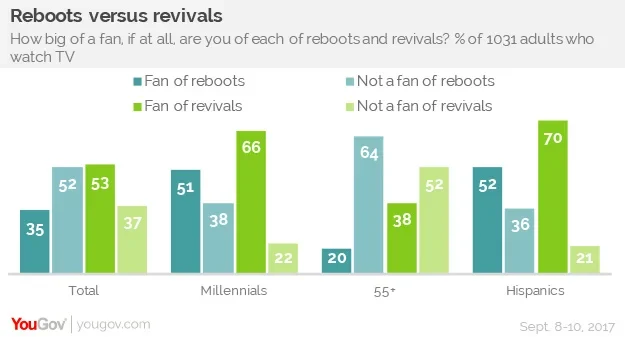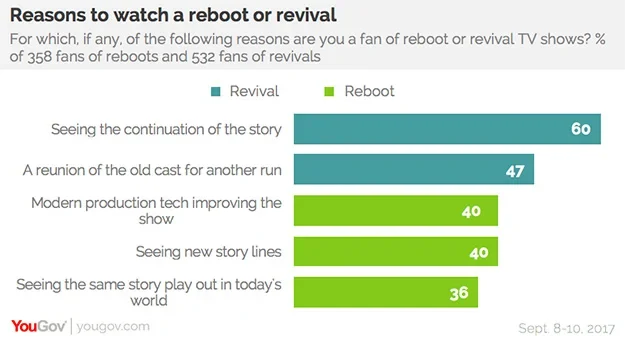Millennial and Hispanic viewers lead fanbase of both types of resurrections
Mass nostalgia – as much a movement as a marketing tactic – continues to grow in 2017. In the social media age, it’s never been easier for nostalgic Americans to share blasts from the pasts with other like-minded people and connect over positive cultural memories. The trend allows for old hits like Will & Grace, Star Trek, and Curb Your Enthusiasm to appeal to millennials and leverages fond memories to create a “still relevant” viewing experience.
The terms reboot and revival are two vastly different types of resurrections – and Americans know which they prefer over the other. A reboot is a show that has discarded all continuity in an established story in order to recreate its characters, timeline, and backstory from the beginning. New YouGov Omnibus research reveals that half of Americans are not fans of this type of TV nostalgia, while half of millennial (51%) and Hispanic (52%) viewers say they are fans.
A revival is a show that has been brought back after being off the air and continues with the same story line. Most Americans (53%) are fans of this type of resurrection with the most enthusiastic again being millennials (66%) and Hispanics (70%). Not everyone is follower of this trend though; Americans ages 55 and over are predominantly not fans of revivals (52%).

What’s fueling this surge in reboots and revivals? Fans of reboots say they want to see how modern production technology will improve the show (40%) while the same amount are eager for new story lines (40%). Those who tune in for a revival want to see the continuation of a story line (60%) or simply want the old cast to reunite for another run (47%). In both cases, reboots and revivals draw fans purely out of nostalgia and the “feel-goods” that comes from seeing something familiar.










